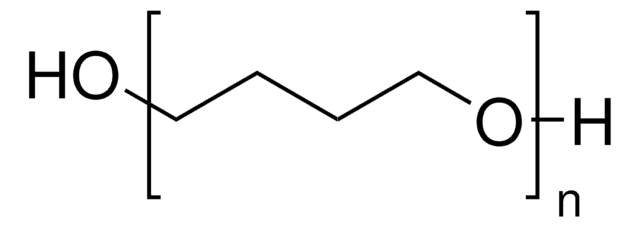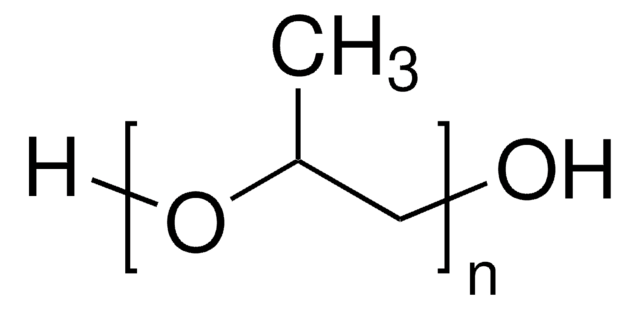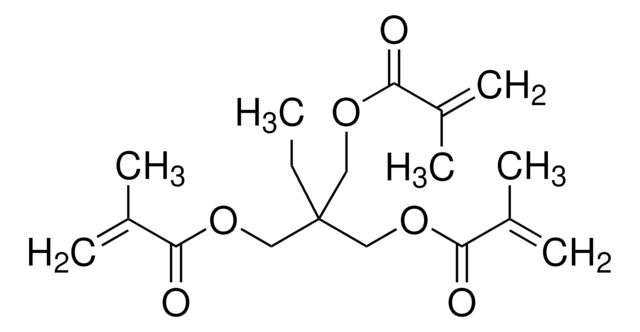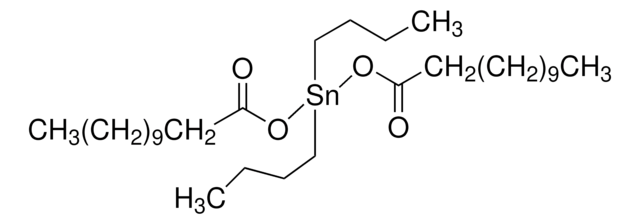Kluczowe dokumenty
345288
Poly(tetrahydrofuran)
average Mn ~650
Synonim(y):
Terathane® 650 polyether glycol, poly(tetramethylene ether), α-Hydro-ω-hydroxypoly(oxy-1,4-butanediyl), Poly(1,4-butanediol), polyTHF
About This Item
Polecane produkty
ciśnienie pary
<0.01 mmHg ( 25 °C)
<1 mmHg ( 20 °C)
masa cząsteczkowa
average Mn ~650
zawiera
0.05-0.07% BHT as stabilizer
współczynnik refrakcji
n20/D 1.465
mp
11-19 °C
gęstość
0.978 g/mL at 25 °C
ciąg SMILES
OCCCCO
InChI
1S/C8H18O2/c1-3-5-6-10-8(4-2)7-9/h8-9H,3-7H2,1-2H3/t8-/m0/s1
Klucz InChI
BJZYYSAMLOBSDY-QMMMGPOBSA-N
Szukasz podobnych produktów? Odwiedź Przewodnik dotyczący porównywania produktów
Opis ogólny
Zastosowanie
Informacje prawne
Hasło ostrzegawcze
Warning
Zwroty wskazujące rodzaj zagrożenia
Zwroty wskazujące środki ostrożności
Klasyfikacja zagrożeń
Acute Tox. 4 Oral - STOT SE 3
Organy docelowe
Respiratory system
Kod klasy składowania
10 - Combustible liquids
Klasa zagrożenia wodnego (WGK)
WGK 3
Temperatura zapłonu (°F)
474.8 °F - Cleveland open cup
Temperatura zapłonu (°C)
246 °C - Cleveland open cup
Środki ochrony indywidualnej
dust mask type N95 (US), Eyeshields, Gloves
Wybierz jedną z najnowszych wersji:
Masz już ten produkt?
Dokumenty związane z niedawno zakupionymi produktami zostały zamieszczone w Bibliotece dokumentów.
Klienci oglądali również te produkty
Nasz zespół naukowców ma doświadczenie we wszystkich obszarach badań, w tym w naukach przyrodniczych, materiałoznawstwie, syntezie chemicznej, chromatografii, analityce i wielu innych dziedzinach.
Skontaktuj się z zespołem ds. pomocy technicznej











